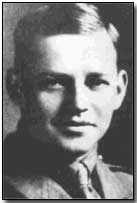Who's Who - Francis Quigley
 Francis Granger Quigley
(1894-1918) scored 33 confirmed victories as a Canadian
air ace
during the First World War.
Francis Granger Quigley
(1894-1918) scored 33 confirmed victories as a Canadian
air ace
during the First World War.
Born on 10 July 1894 in Toronto and educated at St. Andrew's in Aurora and Queen's University in Toronto, Quigley was still at university when war broke out in August 1914.
In mid-December he enlisted with the Canadian Army Engineers and was sent first to England (in May 1915) and then to the Western Front. As with many army men before him Quigley sought and received a transfer to the air service in early 1917.
Quigley was posted to RFC 70 Squadron from September 1917, based in France, where he flew Sopwith Strutters and then Sopwith Camels. All 33 of his confirmed victories were achieved with the latter aircraft. He opened his aerial kill tally on 10 October 1917 and within twenty minutes brought down a second enemy German aircraft.
Awarded the Military Cross during the autumn of that year he rounded off 1917 with a total of nine aerial victories. On 22 February 1918 Quigley shared the credit for bringing down three German aircraft. The following month - which saw the start of the great German spring offensive - Quigley increased his kill total by a further 15, including four on one day on both 9 and 11 March. The next day, 12 March, he scored three additional victories in just five minutes over Dadizeele.
March 1918 also brought Quigley an award of the Distinguished Service Order (DSO), partly for his role in bombing German ground forces during the German advance, firing some 3,000 rounds and dropping 30 bombs.
His final victory was achieved at Morchies on 23 March. Promoted to Captain he sustained an ankle wound on 27 March and was sent home to Canada for recuperation. Determined to return to active service Quigley embarked for England in September 1918.
He was not to rejoin the conflict however: he came down with the influenza pandemic at that time sweeping the globe and died in hospital two days after his ship docked at Liverpool on 20 October. He was aged 24.
A bunker comprised a fortification largely built below ground level.
- Did you know?
